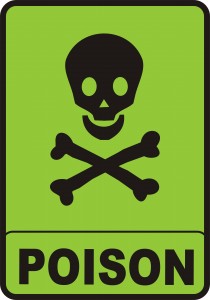One of the major concerns facing humanity a whole moving forward is the issue of climate change. It has been shown that we have an enormous effect on the environment around us and one of the biggest ways we do so is through the many ways we negatively affect the air quality. There are lots of contributing factors to the degradation of the quality of the air we breathe but one that cannot be ignored is the effect that wood burning chimneys have. Burning wood releases a lot of toxic gases into the atmosphere (and if not properly managed your home) the most dangerous of which is carbon monoxide.
Carbon monoxide (or CO) is an odorless, tasteless, invisible gas that is released by the burning of wood (as well as other methods) that is deadly if inhaled in high enough concentrations. A functioning chimney will ventilate all of this gas as well as the smoke and other byproducts up out of your home however if you have an issue that prevents this you could end up with a buildup of this deadly gas inside your home. It is always good to have a carbon monoxide detector in your home just in case.

One reason to have your chimney regularly cleaned and inspected is to reduce the risk of improper ventilation.
In addition to carbon monoxide a blockage or improper ventilation could lead to a buildup of smoke in your home. While this is less immediately dangerous than carbon monoxide it does have undesirable effects. For one thing your house will be smokey and all of your clothing and furniture could smell like smoke. It will also get into your lungs and can set off smoke detectors. The easiest way to make sure that blockages and ventilation problems that lead to situations like this do not occur is to have your chimney inspected and swept regularly (once a year before the burning season). While this is always good standard practice there are things that you can do that will decrease the amount of noxious gas and smoke that are emanated from the fire in your chimney.
One of the most important steps you can take to decrease the effect your fire has on the air quality both in and out of your home is to only burn dry, seasoned wood. Wood takes about 6 months to season when stored off the ground in a cool dry place. Once it is seasoned it will burn much cleaner. Not only will it produce less smoke and carbon monoxide but it will also decrease the amount of creosote in your chimney (creosote is a film that is left on the inside of your chimney that is flammable and can cause serious problems for fireplace owners).
One of the simpler ways to reduce your impact on negative air quality is in how you construct your fires. The smaller and hotter your fire is the more efficient and thus less polluting your fire is. If you have a fire burning in your fireplace you should barely be able to see the smoke coming out of your chimney. If the smoke is dark and billowing you have an inefficient fire and are releasing a lot of pollutants into the atmosphere.
Climate impact is something that we all as a species must combat. If you have a wood-burning fireplace it is especially important that you take the proper steps to reduce your emissions. It may seem like a simple step but in the long run it will have a huge impact.
